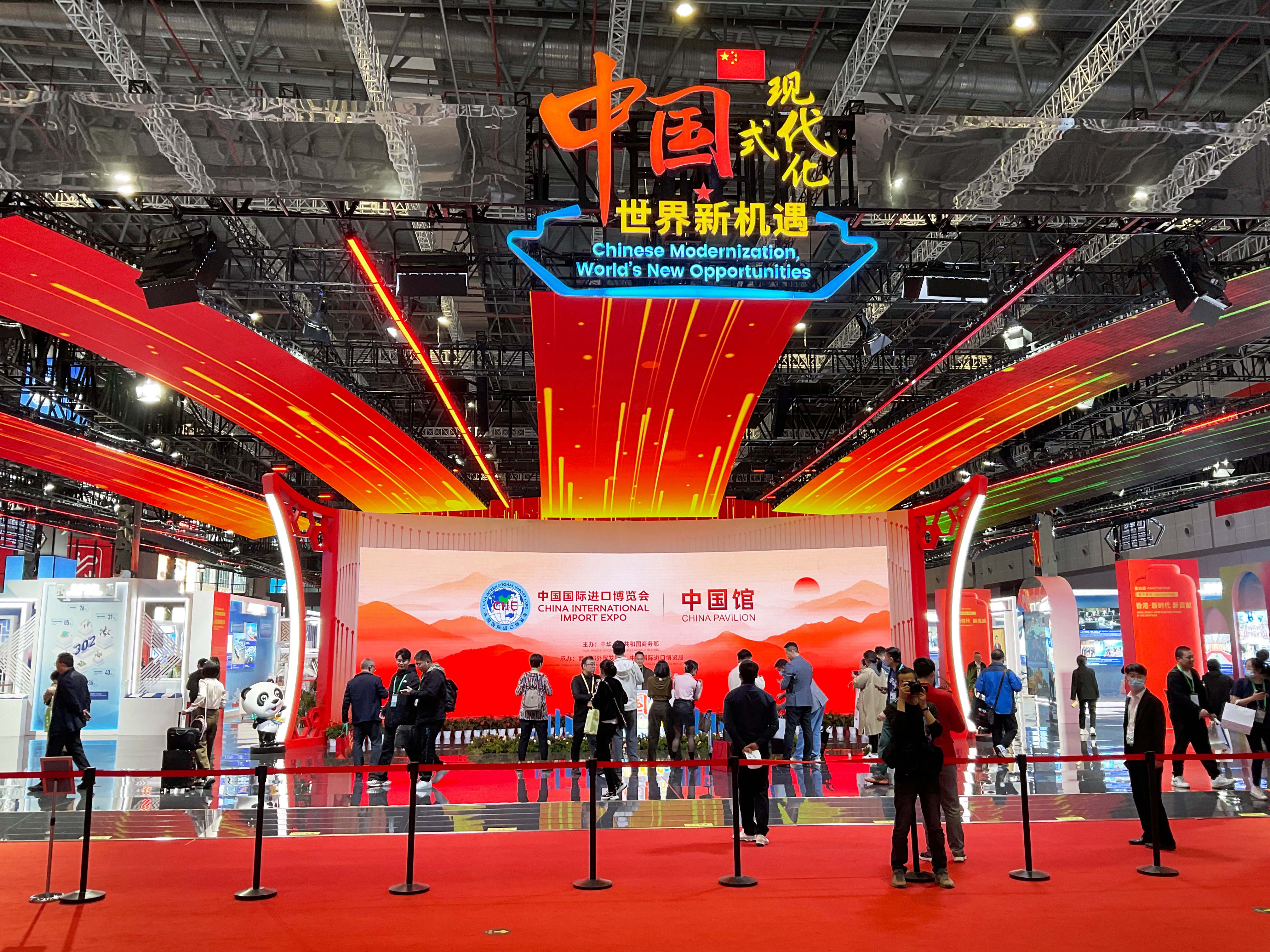By?ZONG?Shihan

The China Pavilion at the 6th CIIE in Shanghai. (PHOTO: LI Linxu/S&T Daily)
Bright lights blazing, large screens flashing and electric vehicles on the move — the National Exhibition and Convention Center (Shanghai) shone brightly as it played host to the 6th China International Import Expo (CIIE) from November 5 to 10.
The power source behind every light, screen and electric vehicle in the venue was green energy, providing irrefutable proof that China is witnessing the development of an energy revolution.
Green electricity marketing
Green power refers to electricity produced with zero or near-zero carbon dioxide emissions in the production process, mainly derived from renewable energy sources such as solar and wind power.
The 6th CIIE bought eight million kilowatt-hours of green electricity from East China's Anhui province through green electricity trading, covering all of the electricity consumption requirements at the expo. This marks the first time that the CIIE has been fully powered by green energy, reducing carbon dioxide emissions by about 3,360 metric tons.
In September 2021, China officially launched a pilot project for green electricity trading. Guiding green electricity consumption in a market-oriented manner distinguishes a group of electricity users who are willing to take on more social responsibilities. They can directly trade with wind and photovoltaic power generation projects, increasing economic and environmental benefits.
In addition, according to China's policies, compared with traditional power generation, green power has priority in power grid dispatching, execution and settlement.
The emergence of green electricity trading created a bridge between the 6th CIIE in Shanghai, which had a demand for green electricity, and Anhui, which is rich in green electricity resources.
Since November 1, green electricity from several clean energy power generation companies in Anhui has been directly sent to the National Exhibition and Convention Center in Shanghai to power the 6th CIIE.
Electricity saving
How to maximize the use of green electricity from outlying areas and ensure the smooth and safe use of electricity during the CIIE was a major challenge. To address this issue, the expo synchronized green energy sources with the intelligent power supply safeguard system, known as the "energy brain," to achieve safe, stable, and efficient green energy consumption.
A total of 3,943 data collection sensors across the venue served as neural tentacles of the "energy brain." Based on the intelligent Internet of Things architecture, these sensors analyzed real-time energy usage in the venue to support the development of energy-saving measures for lighting systems, air conditioning systems and advertising equipment, improving the low-carbon and energy-saving management level of the venue.
When the system showed that the power load of the venue exceeded 40 percent, venue staff would check all load types to ensure that the entire venue operated under energy-saving conditions.
Meanwhile, with a total installed capacity of 2.2 megawatts of photovoltaic power generation on the roof of the venue, emissions were reduced by 4.6 percent for the duration of the expo. The venue also used the waste heat generated from power generation for summer cooling, winter heating, and domestic hot water supply, achieving reasonable energy utilization.
Long-term electricity generation
China is the world's largest producer and consumer of electricity,
having the world's top power generation, power grid scale and new energy scale.
Under the aim of having CO2 emissions peak by 2030 and achieving carbon neutrality before 2060, the power industry has vigorously promoted the green and low-carbon transformation, with remarkable results.
According to data from China's National Energy Administration, as of the first nine months of 2023, China's installed capacity of renewable energy had been about 1.384 billion kilowatts, accounting for about 49.6 percent of the country's total installed capacity, which has exceeded the installed capacity of thermal power. China has now ranked first in hydropower, wind power and solar power generation installed capacity for 18 years, 13 years and 8 years in a row, respectively.
As a leading country in renewable energy development, China has also been working with other countries to seek green energy and low-carbon innovation solutions.
Whether it is the "power expressway" built by the State Grid Corporation of China , which transports hydropower from the Amazon River basin to southeastern Brazil more than 2500 kilometers away, meeting the electricity demand of 22 million people, or the Saudi Arabian Al Schubach 2.6 GW photovoltaic power station project undertaken by other Chinese companies that has opened up a flower of hope in the desert, China's green power technology not only illuminates the CIIE, but also shines around the world.
The trio will conduct a series of experiments in fields such as life science, fluid physics, combustion science and materials science. Notably, this is the first time that fruit flies have been taken on a Chinese space mission as experimental subjects. What made scientists choose fruit flies? What experiment will they undergo?
